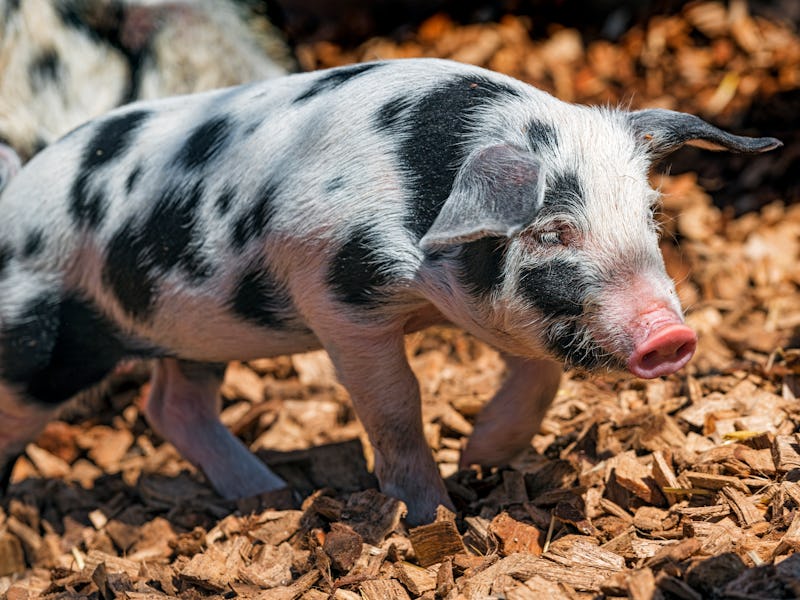Forensic Scientists Use Pigs to Simulate America's Most Macabre Murders
It's a grisly job, but somebody's gotta do it.

Federal sources estimate that 1,750 children died from abuse and neglect in 2016. Bringing the culprits to justice is a priority, but it will require a far better understanding of how these deaths occurred. Forensics researchers are taking a big step in this direction at a body farm at North Carolina State University, where macabre experiments are being used to better understand how the bodies of children and infants break down in the environment. They aren’t, of course, using human bodies.
The researchers have come up with a creative way to simulate human decomposition without breaching any ethical issues. In a paper published September 20 in the journal Forensic Sciences Research, the researchers outlined the results of a study examining how young pigs decompose. For a long time, forensics researchers have suspected that children decompose more quickly than adults, but there wasn’t evidence to support this idea. So Ann Ross, Ph.D., a professor of biological sciences and board-certified forensic anthropologist, and Ph.D. student Amanda Hale set out to fill in this knowledge gap with farm animals.
Pig carcasses at the NC State test area.
Before the team started working on this study in 2013, Hale tells Inverse, law enforcement officials had approached Ross’s lab to assist in examining the remains of children and babies whose bodies had been disposed of in unconventional ways — specifically in plastic bags or wrapped in blankets.
“In these cases, law enforcement asked for any information regarding time since death or the postmortem interval — the current research at the time, however, was not useful in answering these questions,” says Hale. So, the team got to work establishing research that could be useful in answering these questions.
To do so, they employed the well-established — if sometimes controversial — practice of using pigs as approximations for decomposing humans. Every season for two years, Hale and Ross placed pigs in several different conditions and tracked their decomposition. They acquired smaller pigs from the NC State Veterinary School, ranging from four to 50 pounds, to simulate human babies and children.
Warning: Photos of decomposing pigs become increasingly unsettling in this slideshow.
Cages help protect the carcasses from scavengers.
Some of the small pigs were placed in plastic bags.
Blankets didn't prevent maggots from infesting the pig carcasses.
...and neither did bags.
Eventually they all ended up as piles of bones.
Smaller pigs, which simulated infant remains, were placed in three conditions: wrapped in plastic bags, wrapped in blankets, or exposed to the elements. Larger pigs were either buried in shallow graves or left out in the open. To protect against raccoons, vultures, and other scavengers, the researchers covered all the remains with cages. Despite their best efforts, a few were lost in the early days of the study, but most remained intact.
As one might expect, Hale and Ross found that the amount of time the bodies spent outdoors played a significant role in decomposition, as did temperature: Decomposition occurred to a greater degree during the summer than during cooler months. But the grisly study brought a number of less obvious factors to light.
“We found that soil moisture was a dominant factor in the overall rate of decomposition, which has been suggested previously, but substantiated here,” says Hale. “Also, the understanding that juveniles and infants will differ in pattern of decomposition than adults due to size, but also due to type of covering.” The small pigs in bags decomposed more slowly than the ones that were in blankets or out in the open, except in the fall months. For the larger pigs, higher humidity corresponded to quicker decomposition for those that weren’t buried. They also found that more rain seemed to speed decomposition.
The body farm experiment confirmed what researchers had long suspected. If pigs are indeed an appropriate model for humans, then children and babies do decompose more quickly than adults. While further research will be needed to establish firmer timelines that law enforcement can use, this study starts to dig into an issue that has not gotten much attention.